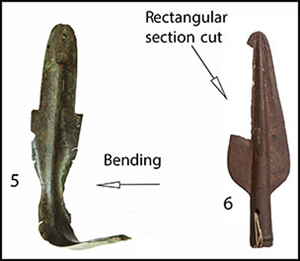No CrossRef data available.
Article contents
Intentional damage to metal artefacts in burials and hoards in the south Caucasus, 2000–550 BC
Published online by Cambridge University Press: 06 February 2024
Abstract

The deposition of intentionally damaged metal artefacts within burials and hoards is a phenomenon attested in areas as disparate as Ireland and the Caucasus during the Bronze and Iron Ages. While ritual significance is often attributed to such damage in burial contexts, the intentions behind the inclusion of damaged objects in hoards remain enigmatic. This article synthesises evidence for the intentional destruction of metal artefacts from 70 sites in the territory of modern Georgia and analyses patterns of deliberate damage over time and space. The study of these damaged artefacts enhances our understanding of ritual practice at a local level and locates the south Caucasus within the wider networks of this phenomenon.
- Type
- Research Article
- Information
- Copyright
- Copyright © The Author(s), 2024. Published by Cambridge University Press on behalf of Antiquity Publications Ltd




